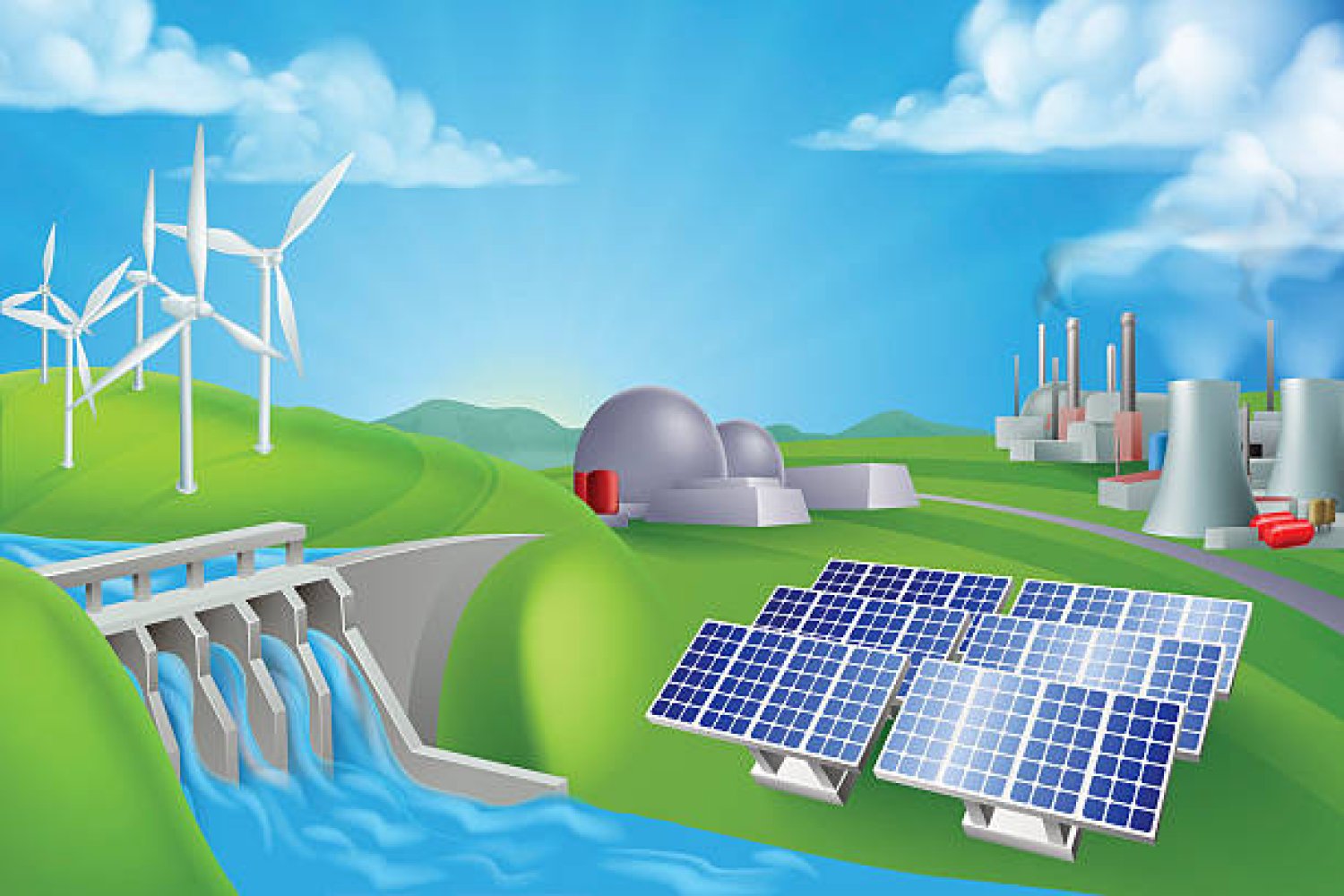Breaking New Ground at IFA: Zendure Enhances Its Home Energy Management System and Enters the Electric Mobility Market – PR Newswire

Zendure Unveils Innovations to Advance Sustainable Development Goals
On September 5, 2025, at the IFA Berlin exhibition, solar energy innovator Zendure announced significant enhancements to its ZEN+ Home Energy Management System (HEMS) and its entry into the electric mobility market. These developments directly support the achievement of several United Nations Sustainable Development Goals (SDGs), particularly in the areas of clean energy, sustainable communities, and climate action.
Contribution to SDG 7: Affordable and Clean Energy
Zendure’s core mission to provide reliable and affordable clean energy is advanced through the AI-empowered ZEN+ HEMS. The system is designed to increase access to and efficiency of renewable energy for households, a key target of SDG 7.
- Enhanced Energy Efficiency: The system’s AI algorithms provide predictive analysis of energy consumption, generation, and market pricing, resulting in a 7-22% increase in energy output from solar installations.
- Increased Affordability: By optimizing energy use against dynamic tariffs from over 700 European providers, the HEMS can generate household cost savings of up to 42%, making clean energy more economically accessible.
- Intelligent Load Management: New features allow for precise control over high-consumption appliances, such as heat pumps and electric vehicles (EVs), scheduling their operation during periods of peak solar generation or low energy tariffs.
Fostering SDG 11: Sustainable Cities and Communities
The company’s expansion into electric mobility with an e-cargo bike concept addresses the need for sustainable transport solutions, a cornerstone of SDG 11. This initiative, integrated within the ZEN+ Home ecosystem, promotes resilient and sustainable urban living.
- Green Transportation: The e-cargo bike is designed to be charged using stored solar energy from the home system, providing a zero-emission transport alternative for families and local logistics.
- Sustainable Infrastructure Integration: The bike’s features, including a 400 km ECO range and optional solar roof, demonstrate a holistic approach to building sustainable personal mobility infrastructure that is integrated with renewable home energy.
- Smart and Safe Mobility: Equipped with NFC access and 4G GPS, the concept promotes the development of safe, accessible, and sustainable transport systems.
Promoting SDG 12 and SDG 13: Responsible Consumption and Climate Action
The ZEN+ HEMS empowers consumers with tools and data to actively manage and reduce their environmental footprint, directly contributing to SDG 12 (Responsible Consumption and Production) and SDG 13 (Climate Action).
- Informed Consumption Patterns: The system provides real-time monitoring, detailed analyses, and personalized savings recommendations, encouraging users to adopt more sustainable energy consumption habits.
- Automated Efficiency: A multilingual voice assistant delivers reports and usage advice, simplifying the process for users to optimize their energy use and reduce waste.
- System Scalability: The HEMS supports up to 10 smart sockets and 6 energy storage devices, allowing households to build a comprehensive, centrally managed system that minimizes reliance on fossil fuels and reduces overall carbon emissions.
Analysis of Sustainable Development Goals (SDGs) in the Article
-
SDGs Addressed in the Article
-
SDG 7: Affordable and Clean Energy
The article focuses on Zendure’s ZEN+ Home Energy Management System (HEMS), which utilizes AI to manage and optimize household energy from solar power. This directly relates to ensuring access to affordable, reliable, sustainable, and modern energy for all.
-
SDG 9: Industry, Innovation, and Infrastructure
The text highlights technological innovation, such as the AI-empowered HEMS, a voice assistant for energy management, and the development of an e-cargo bike. These advancements represent progress in building resilient infrastructure and fostering innovation.
-
SDG 11: Sustainable Cities and Communities
The introduction of an e-cargo bike powered by stored solar energy promotes sustainable transport systems. Additionally, the HEMS contributes to making households more energy-efficient and sustainable, which is a key component of creating sustainable communities.
-
SDG 13: Climate Action
By promoting the use of solar energy, optimizing energy efficiency in homes, and introducing electric mobility solutions, the technologies discussed in the article contribute to combating climate change and its impacts by reducing reliance on fossil fuels.
-
-
Specific Targets Identified
-
Target 7.2: Increase the share of renewable energy
The article describes a system designed to manage and utilize solar power for homes, including running heat pumps and charging electric vehicles. This directly supports increasing the proportion of renewable energy in the household energy mix.
-
Target 7.3: Double the global rate of improvement in energy efficiency
The HEMS uses AI to forecast consumption and generation, leading to “7-22% higher output and up to 42% cost savings.” This optimization represents a significant improvement in energy efficiency at the household level.
-
Target 9.4: Upgrade infrastructure and retrofit industries for sustainability
The article discusses the adoption of clean technologies like the HEMS and the e-cargo bike. These innovations help upgrade household infrastructure to be more sustainable and resource-efficient.
-
Target 11.2: Provide access to sustainable transport systems
Zendure’s e-cargo bike concept, which “integrates with the ZEN+ Home ecosystem using stored solar energy for green transport,” is a direct contribution to developing safe, smart, and sustainable mobility solutions.
-
-
Indicators Mentioned or Implied
-
Energy Efficiency and Savings
The article provides specific metrics that can serve as indicators: “7-22% higher output” and “up to 42% cost savings.” These figures measure the system’s effectiveness in improving energy efficiency and affordability.
-
Renewable Energy Integration Capacity
The system’s ability to support “10 smart sockets and 6 storage devices” and integrate with “over 700 European providers” of dynamic tariffs indicates its capacity to manage and scale renewable energy use within homes.
-
Sustainable Mobility Performance
For the e-cargo bike, the “400 km ECO range,” “fast charging,” and the “optional solar roof” are measurable indicators of its performance and sustainability as a transport option.
-
Summary of SDGs, Targets, and Indicators
| SDGs | Targets | Indicators |
|---|---|---|
| SDG 7: Affordable and Clean Energy | 7.2: Increase the share of renewable energy. 7.3: Double the global rate of improvement in energy efficiency. |
|
| SDG 9: Industry, Innovation, and Infrastructure | 9.4: Upgrade infrastructure and retrofit industries for sustainability. |
|
| SDG 11: Sustainable Cities and Communities | 11.2: Provide access to sustainable transport systems. |
|
| SDG 13: Climate Action | 13.2: Integrate climate change measures into policies and planning. |
|
Source: prnewswire.com

What is Your Reaction?
 Like
0
Like
0
 Dislike
0
Dislike
0
 Love
0
Love
0
 Funny
0
Funny
0
 Angry
0
Angry
0
 Sad
0
Sad
0
 Wow
0
Wow
0
















































/environment-climate-change-and-health-(ech)/water-sanitation-hygiene-and-health-(wsh)/landfill-tuvalu-36092.tmb-1200v.jpg?sfvrsn=5c21fe40_1#)

.jpg.webp?itok=0ZsAnae9#)























